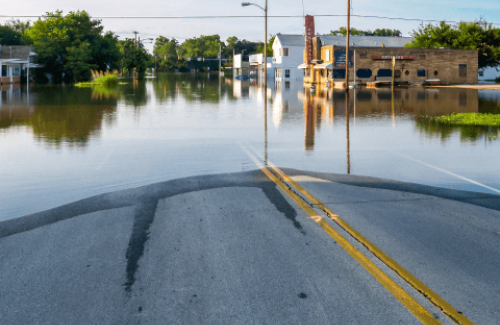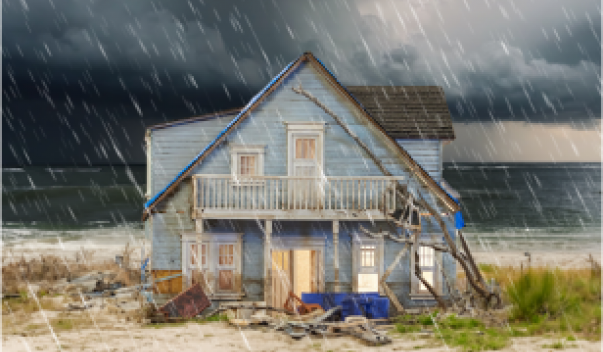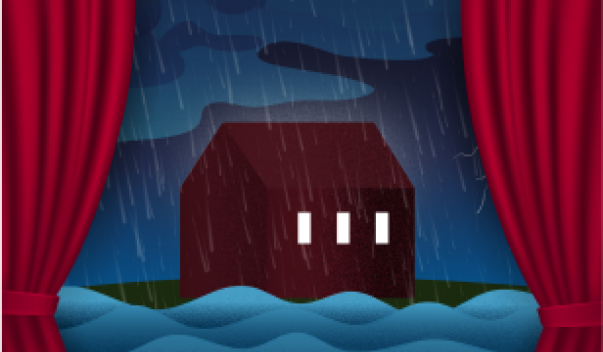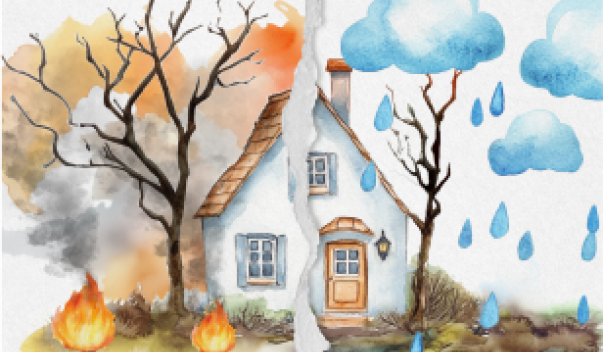What is a flood?
In simple terms, a flood is an excess of water on land that is normally dry. For example, water damage to your home from a river that overflowed into nearby streets and yards would be a direct result of flooding.

Floods happen often and nationwide
-
Flooding can occur anywhere, not just in communities near bodies of water.
-
Weather events and changes to the land, such as new buildings or droughts, make floods more frequent and widespread. It’s not just a coastal issue — anywhere it can rain, it can flood.
-
New construction, including increased concrete without planning for drainage can increase flood risk. This can happen both at the site of the construction and within other parts of a watershed.
Floods are becoming more common
With weather events increasing in frequency and severity, more communities are experiencing flooding. For example, areas that experience drought are more susceptible to flooding. Dry conditions and hot weather cause soil to harden, making it unable to soak up moisture. This makes the area prone to flooding after it finally gets a heavy rain.
In fact, 99% of counties in the U.S. experienced a flood in the past 20 years. Floods cause significant damage and financial costs to homeowners and businesses.
Flooding happens everywhere
49%
In the past five years, nearly half of all counties in the United States experienced a flood.
32%
Over the past 10 years, nearly one-third of NFIP claims are from outside the high-risk zones.
$2.9B
River and stream flooding causes $2.9 billion in damage each year.
How can I protect my home and belongings?
Flood insurance is the best way to protect your property and the life you've built.
Most homeowners insurance policies do not cover flooding. Federal disaster assistance is not guaranteed. It's only available with a presidential disaster declaration. Most flood events do not result in a declaration.
You'll need a flood insurance policy to cover the cost of rebuilding after a flood. The National Flood Insurance Program (NFIP) offers policies for homeowners, renters and businesses.
Types of floods
-
Storm surge from hurricanes
Image
Hurricanes and other coastal storms often come with an unusual rise in seawater levels called storm surge.
-
River flooding
Image
Heavy rain, melting snow, and ice or debris jams can cause rivers and streams to overflow. It can happen quickly and last for days or weeks.
-
Floods after wildfires
Image
Wildfires leave land charred, barren and unable to absorb water. Less water is needed to trigger flooding after a wildfire.
FAQs about floods
The NFIP and FEMA define flooding as two or more properties or acres of normally dry land that are partially or completely submerged by water from any of these events:
- Overflowing inland or tidal waters.
- Unusual, quick surface water runoff.
- Mudflows (rivers of liquid, flowing mud) caused by flooding.
- Collapse or sinking of land along a lake or other body of water caused by heavy waves or currents.
Everyone lives in a community with some flood risk. It’s just a question of whether you live in a high-risk, low-risk or moderate-risk flood area. You can check the NFIP’s and FEMA’s flood maps to learn your risk level.
The number of past flooding events in your area is one of several indicators of your current flood risk. The NFIP provides historical data about flood insurance claims in counties across the United States.
Generally, flood claims are larger in coastal locations, but non-coastal states and counties have experienced flood events—more often than you might expect.
Yes, but only if the president officially declares a disaster. Most flood events do not get a presidential disaster declaration.
Disaster assistance from FEMA and the U.S. Small Business Administration is designed to kick-start recovery, but is not enough to restore your home to its pre-disaster condition or to replace your household items. It typically comes in the form of loans that must be repaid with interest.
Flood insurance, on the other hand, does not have to be paid back, and it is designed to restore your property to its pre-disaster condition.
NFIP offers two types of coverage: building coverage and contents coverage. Building coverage protects your home’s structure and utilities. Contents coverage protects personal belongings and appliances.
